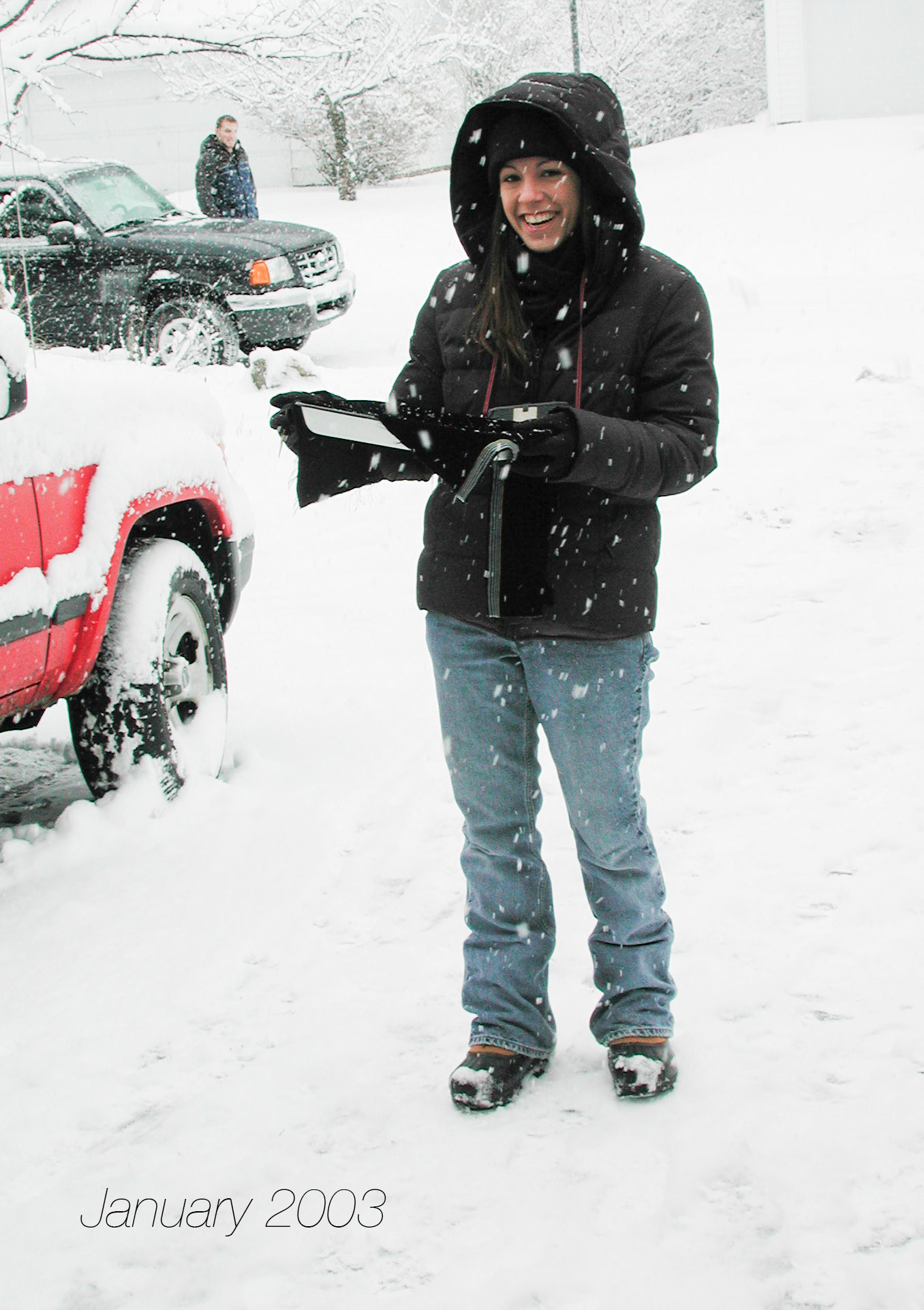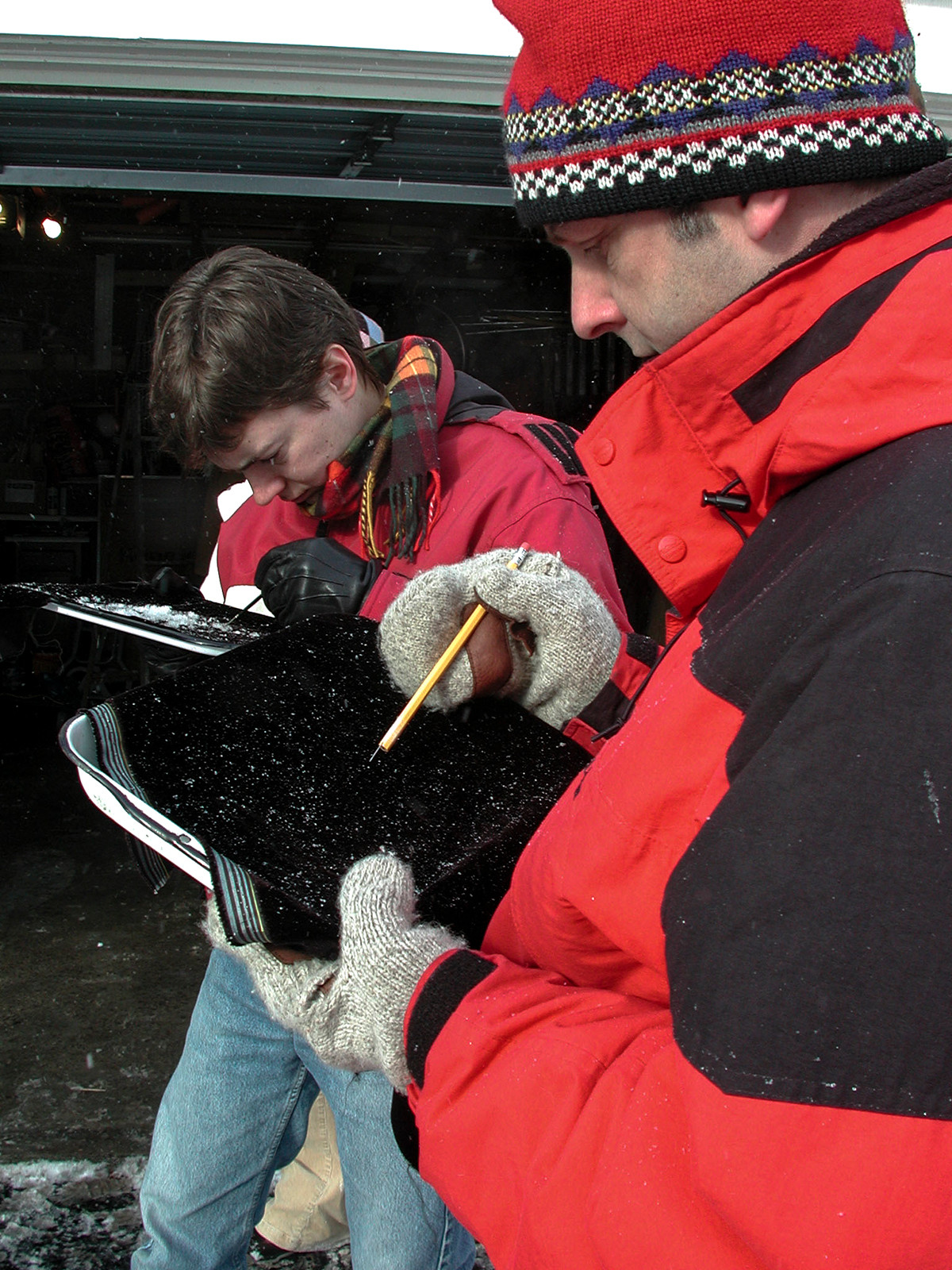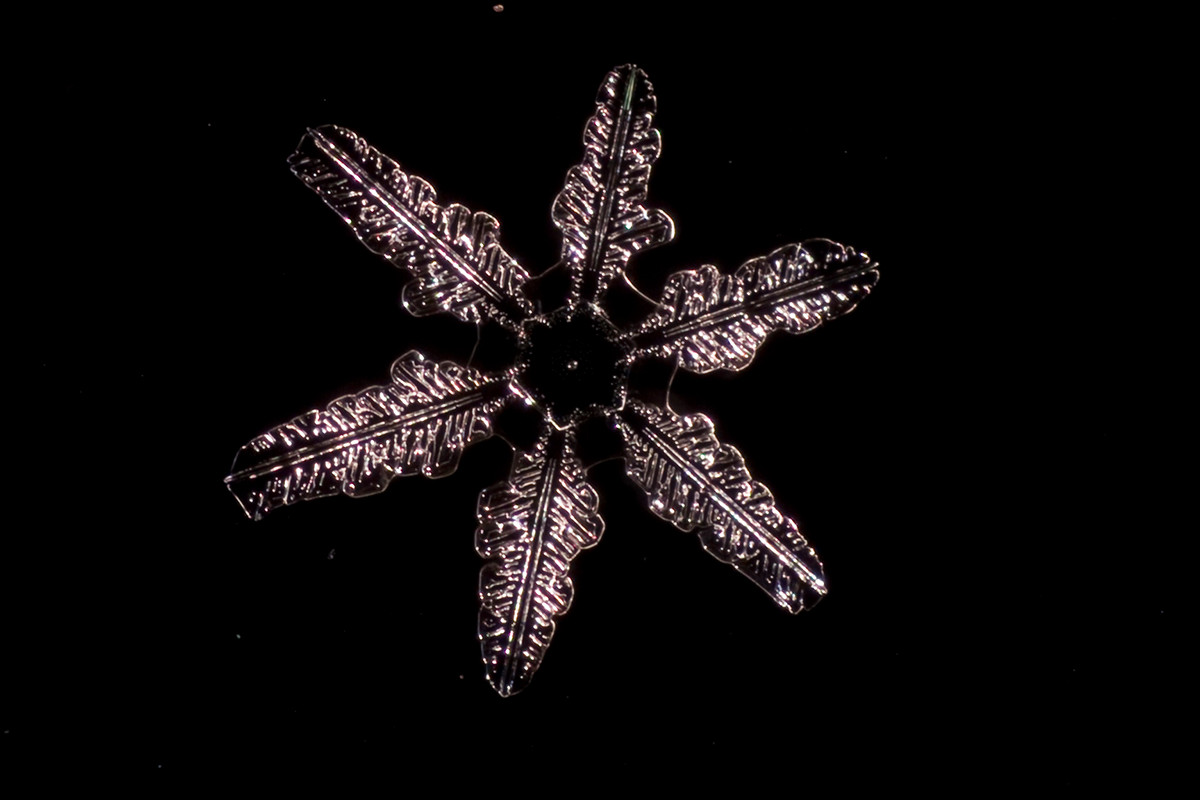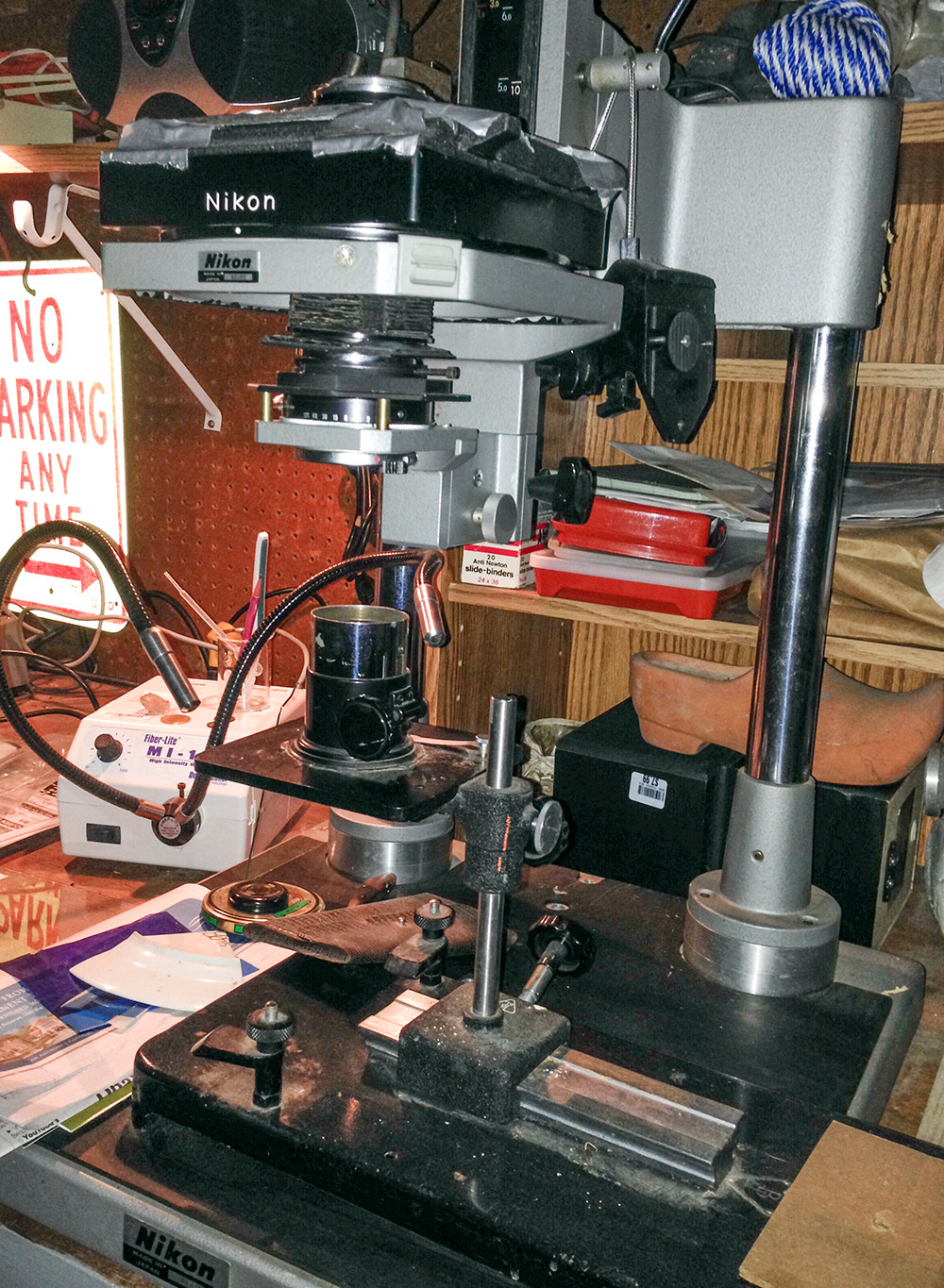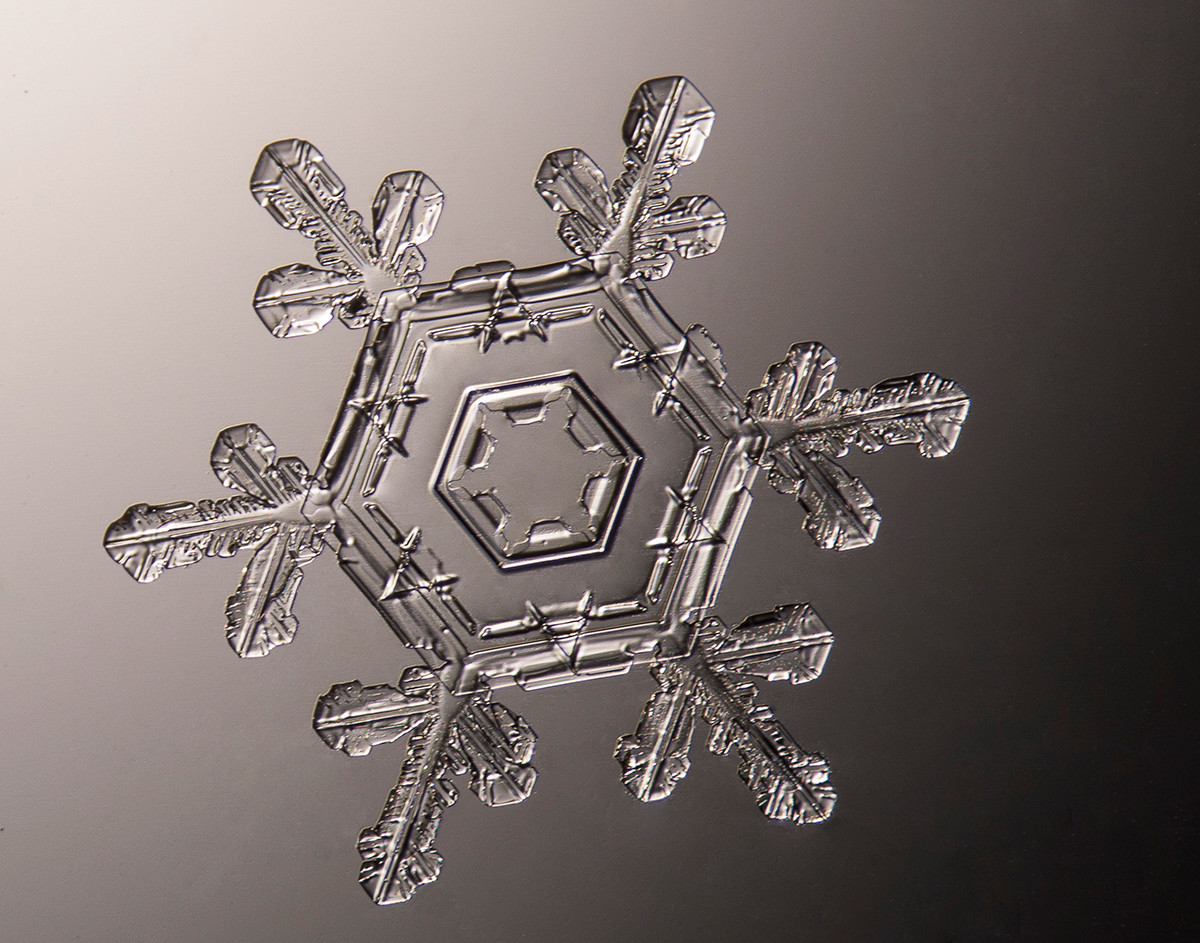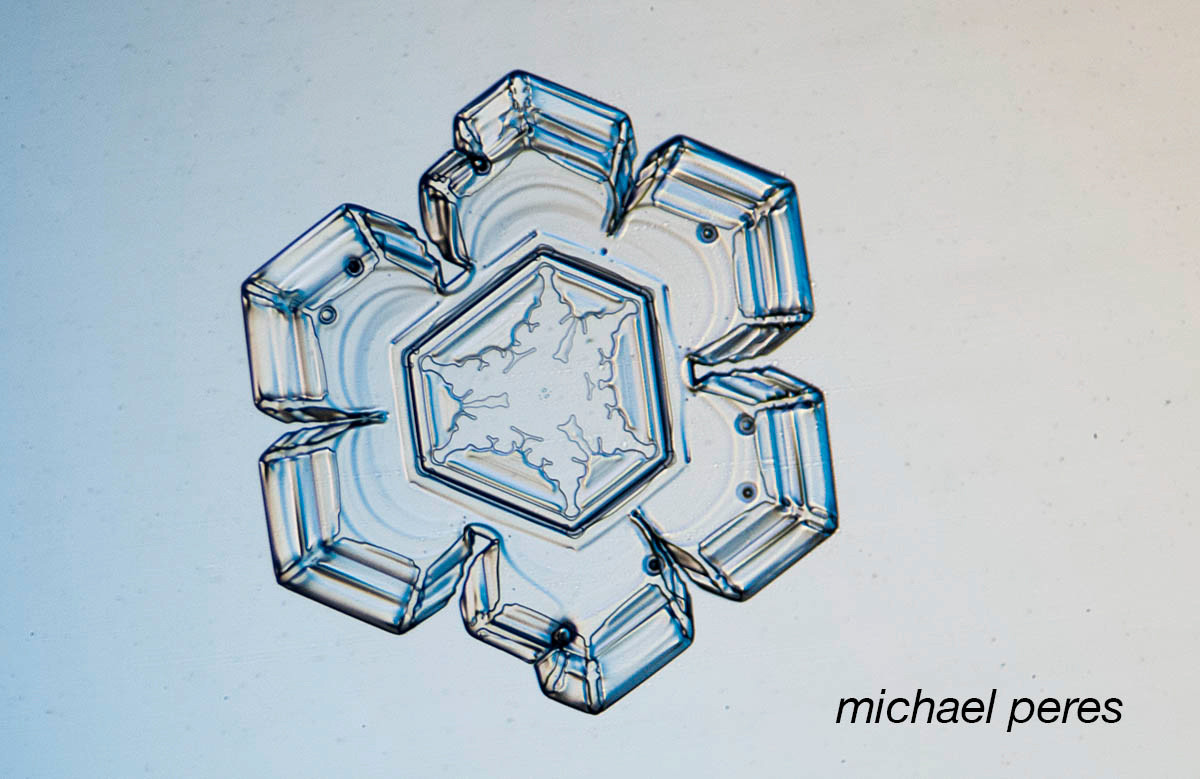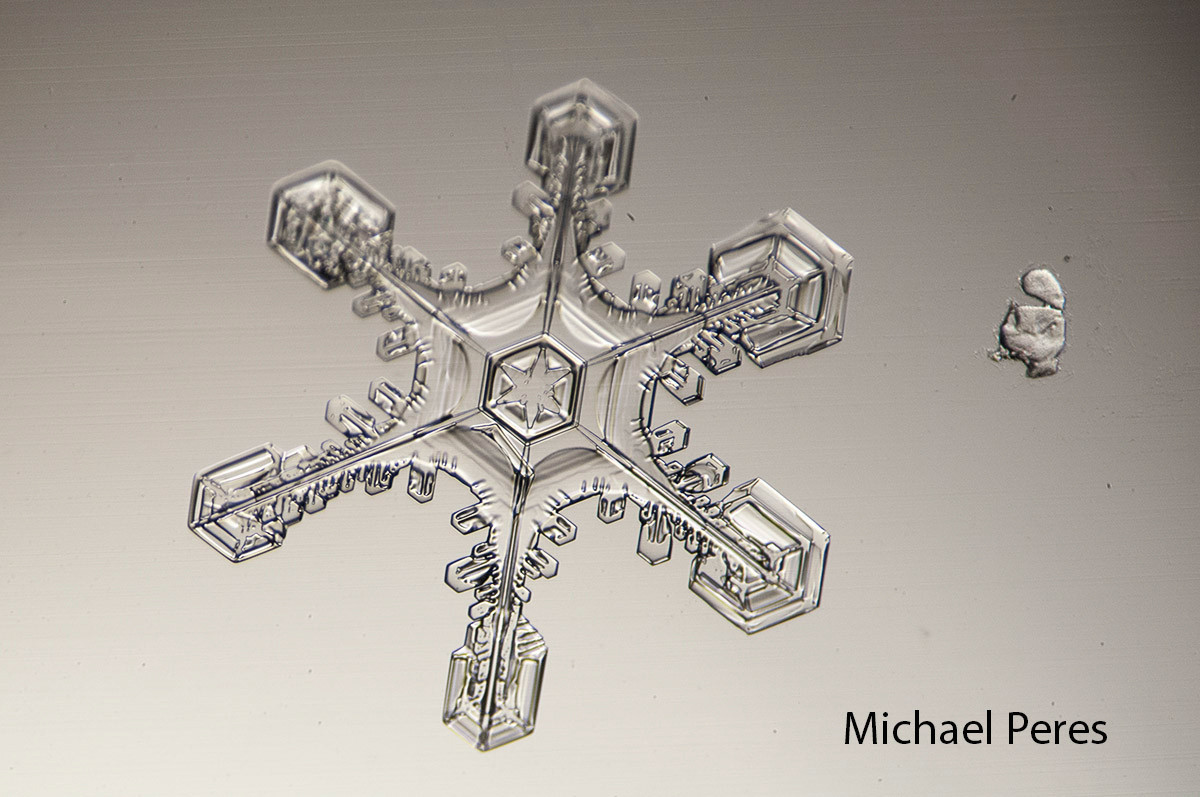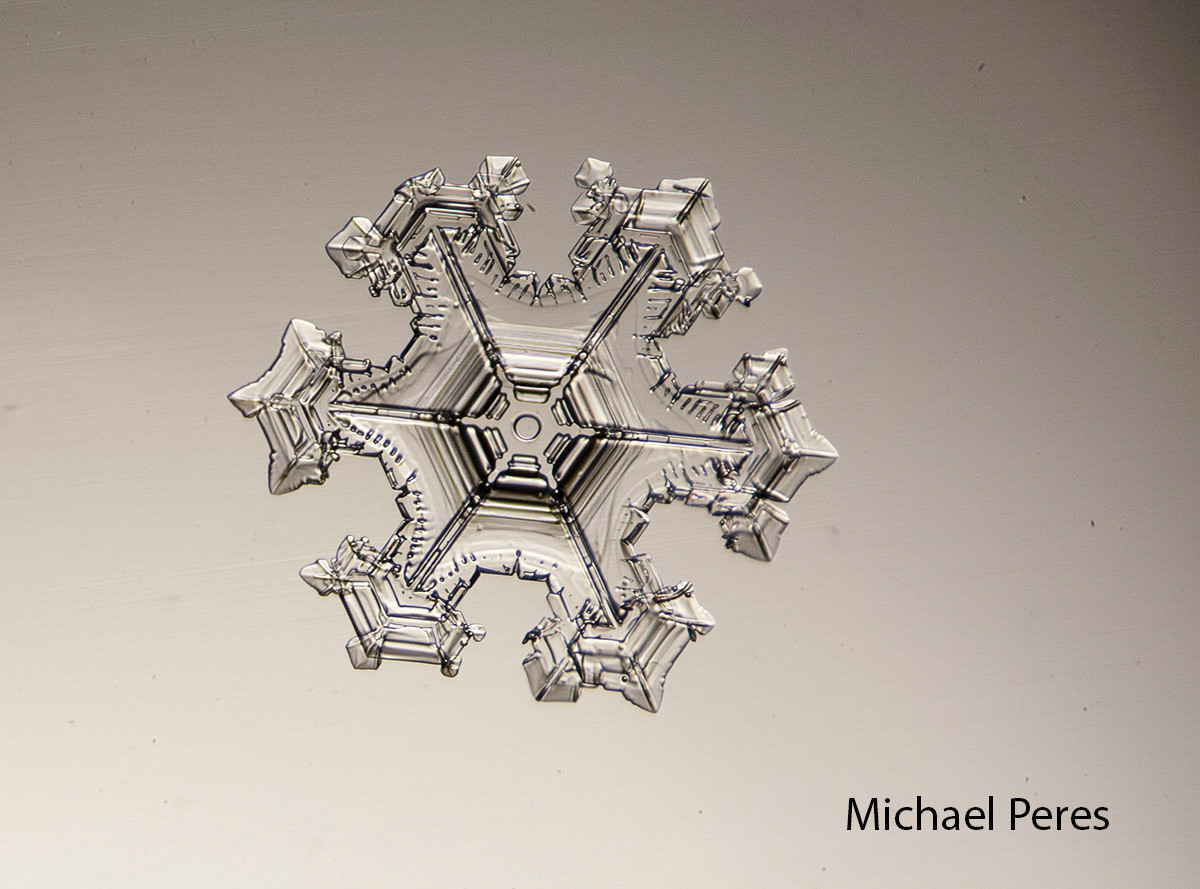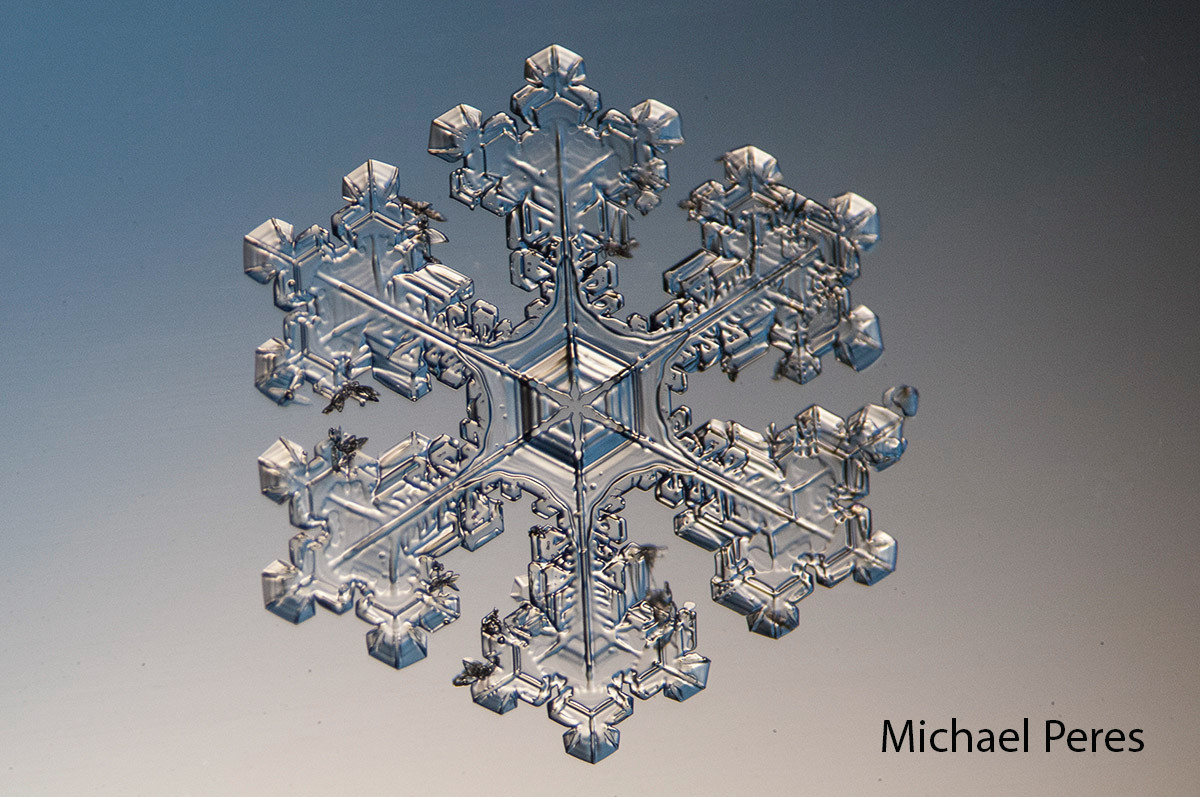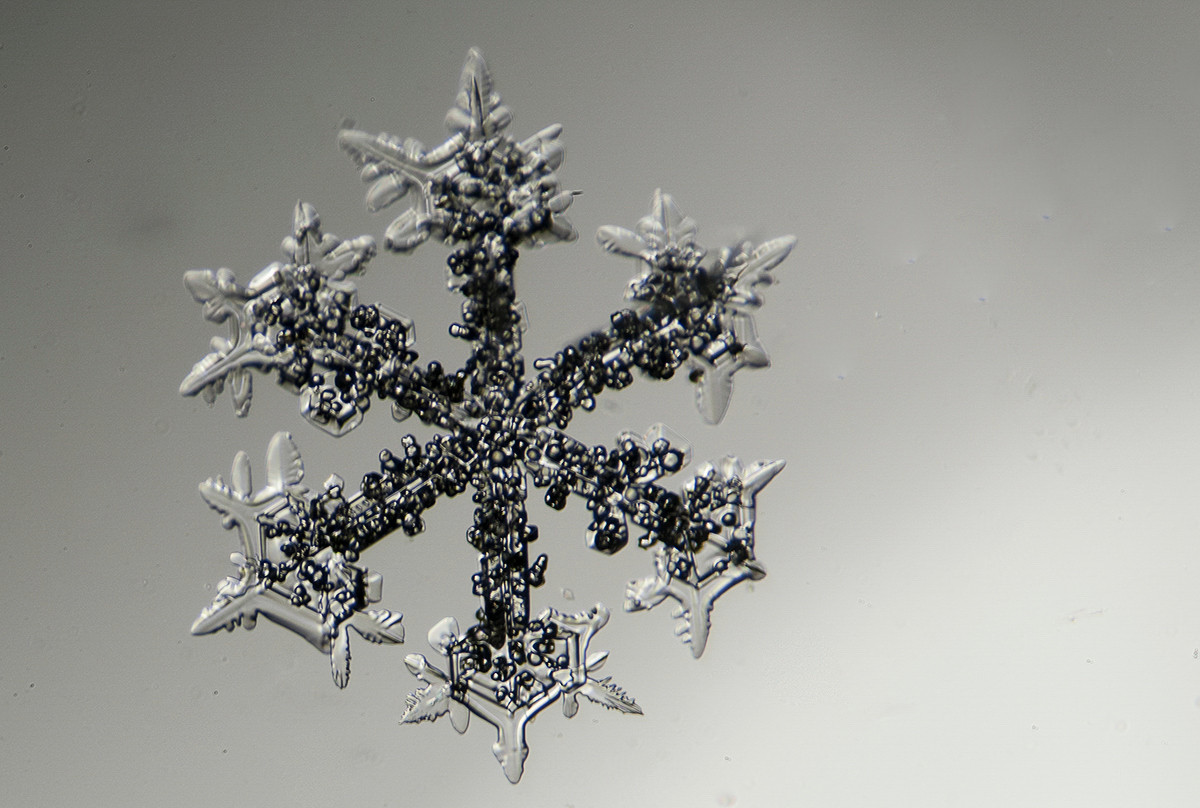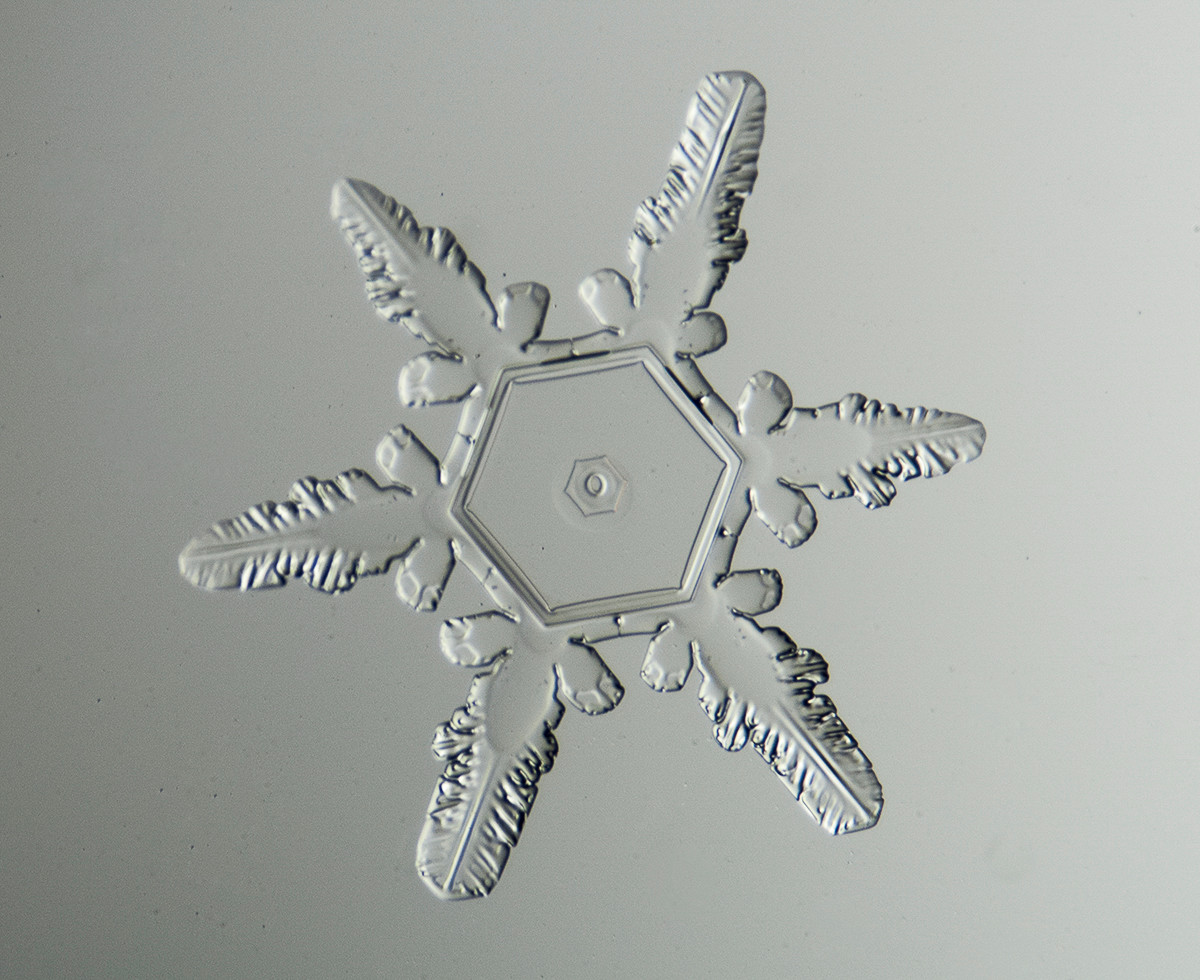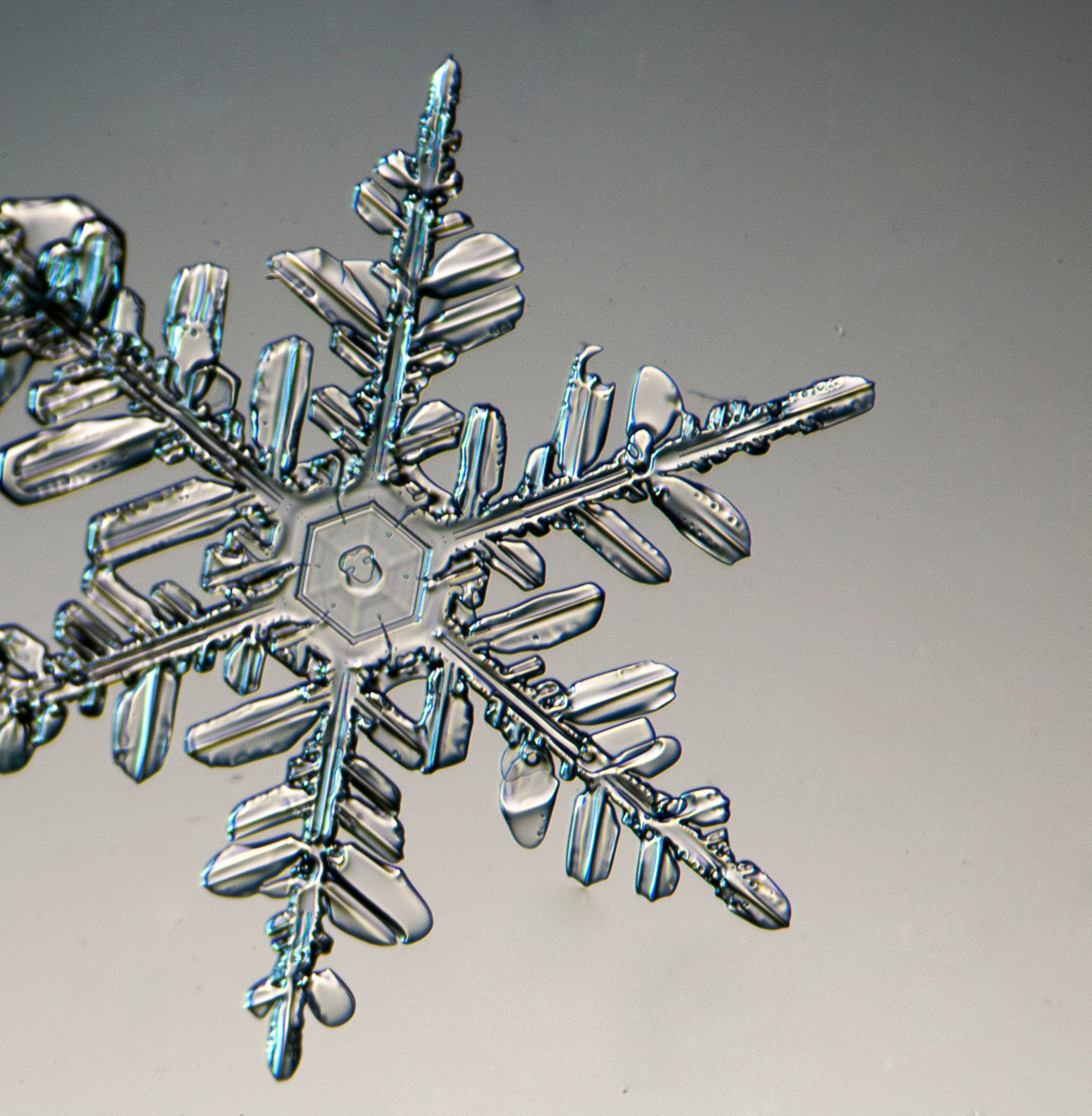Only at RIT – Confessions of a Snowflake Photographer
Confessions of A Snowflake Photographer – Professor Michael Peres
Even today, it remains a mystery to me why some things happen.
Everything starts out at its beginning and then over time things change. Somethings improve and some things go away. You never know what a chance meeting will lead to.
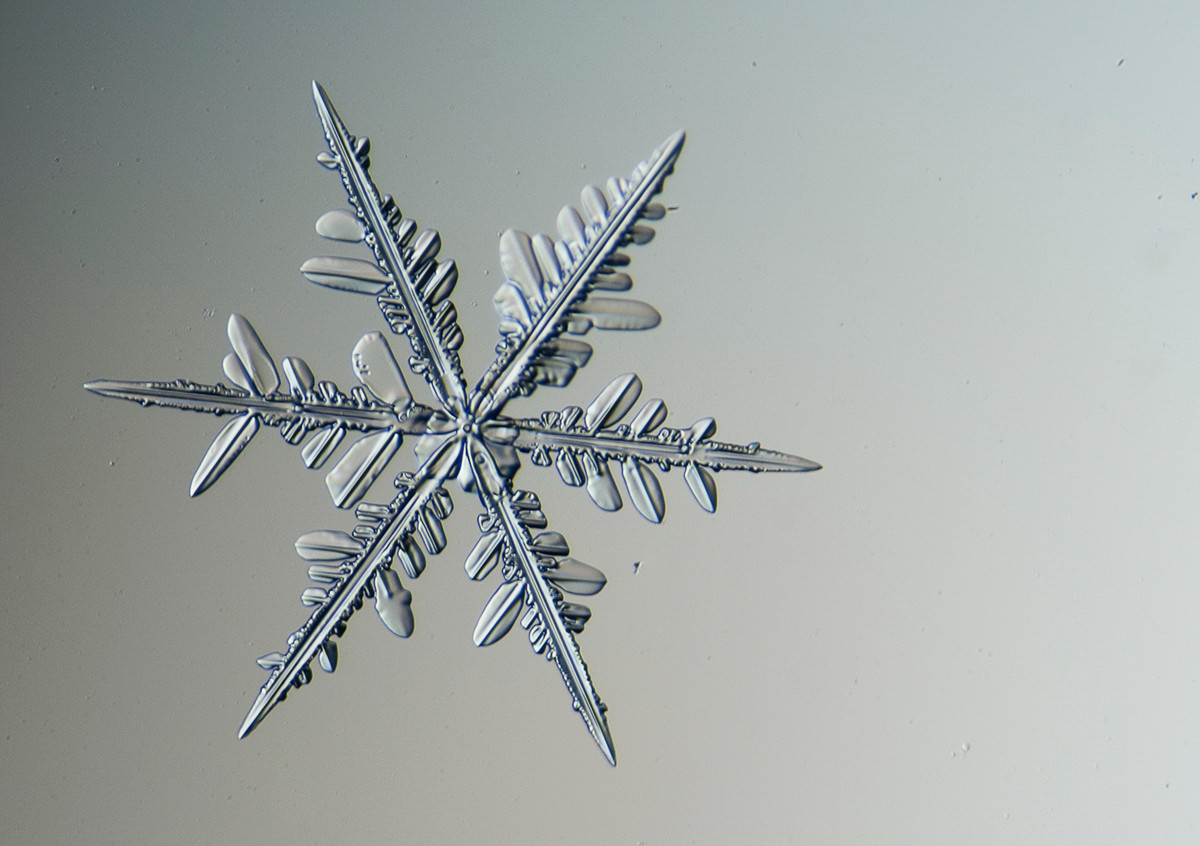
Snowflake from February 1, 2015 storm above. Below, my snowflake studio is in my garage.
I have become addicted to photographing snowflakes. It is embarrassing to share but before I can take the next step to recovery, I had to self admit that I have a problem. Having an addiction like this is a burden that I carry every day of the winter. It is as though I have to make just one more snowflake picture. It is a blessing and curse to wrestle with. But the truth be told, I absolutely love taking these photographs!
I grew up in Utica, NY and for most of my life, I have lived in the northern parts of the country including more than 30 years in Rochester, NY. I briefly lived in Charleston, WV and experienced mild winters there two times.
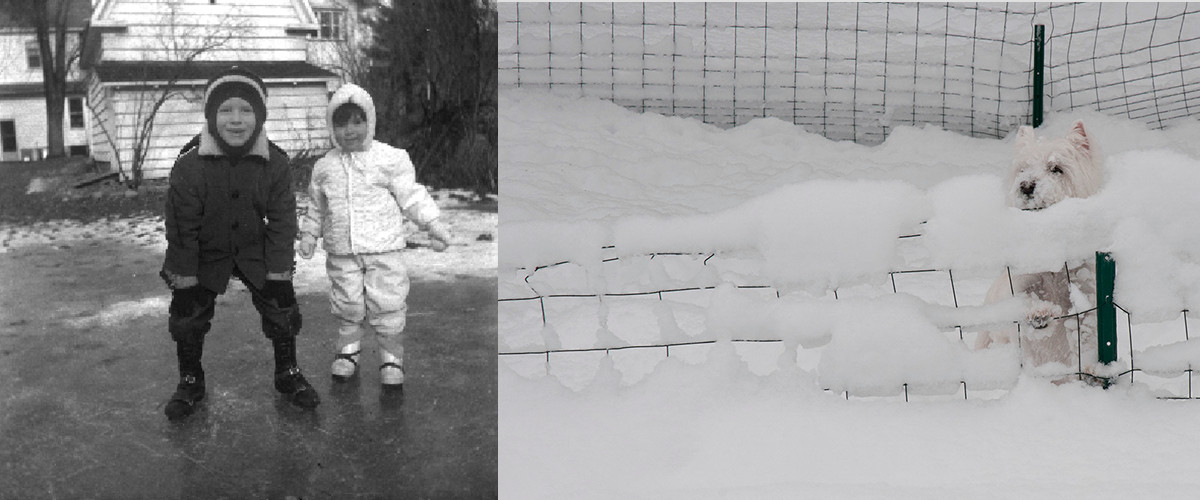
As I kid, I grew up loving winter. We had a skating rink in our backyard during the long and cold months. Snow was an important element to winter. I never really never paid much attention to snowflakes I seem to recall.
When I arrived at RIT in 1986, I had really no interest in photographing snowflakes yet. I taught microscopy classes but it did not occur to me try and photograph nature’s temporary jewels. I was very content to photograph using a microscope in a warm and comfortable lab. I produced thousands of photomicrographs of all kinds of tiny things in my first 17 years at RIT.
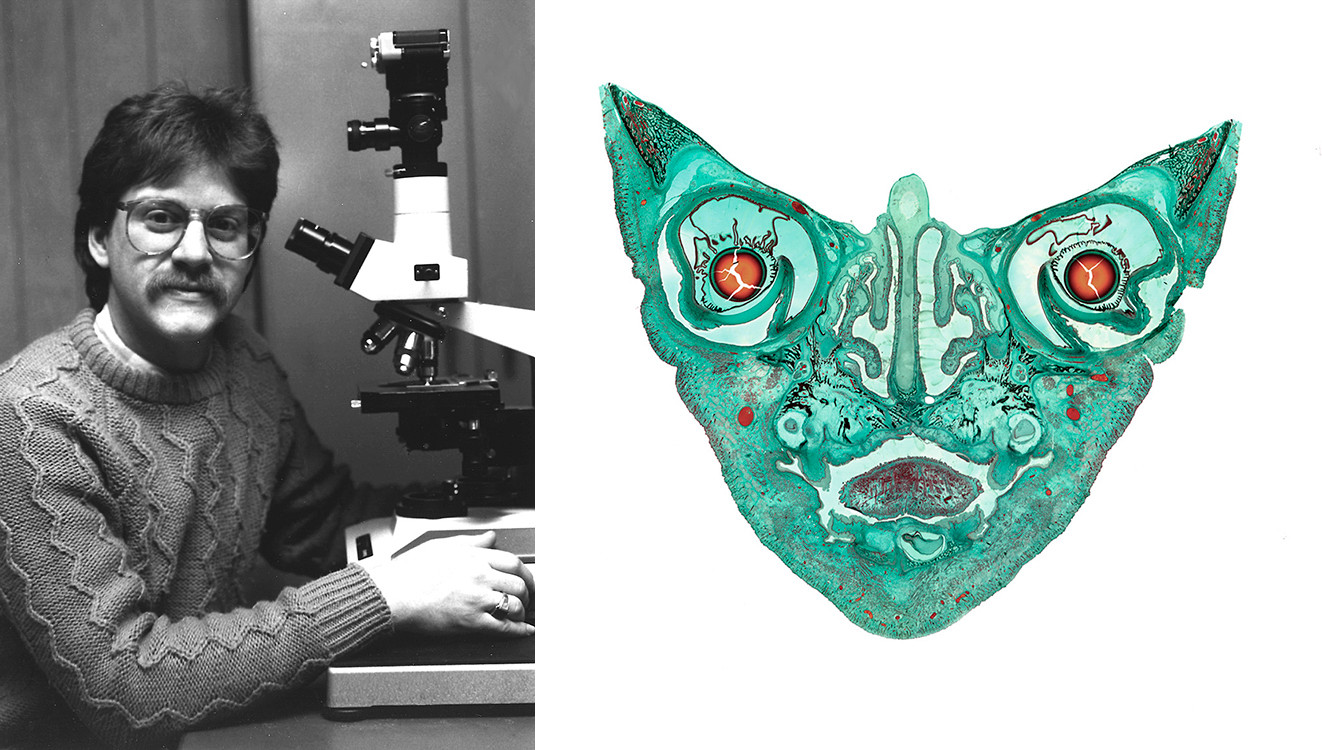
In January 2003, Emily Marshall – now an alum – visited an exhibition of snowflake photography that featured the work of Wilson Bentley from Vermont. The exhibit was at the Buffalo Science Center. Bentley photographed snowflakes at the turn of the twentieth century. She came back to campus motivated to try and do the same thing. Soon she had convinced me and the class to get outdoors, setup a microscope, and take some pictures. We were not too sure of our methods at the time. Ted Kinsman, then an AP physics teacher in Rochester offered to share some of his approaches which were incredibly helpful to get us started.
Wilson Bentley circa 1910 and some examples of his work.
Ted Kinsman sorts flakes for possible photographing.
In each winter since that time, I get excited in anticipation of photographing the perfect flake. I equate this activity to what one experiences when fishing or working for a volunteer fire company not knowing what will happen when the moment arrives. You get all ready to try and then wait. Sometimes you catch and sometimes there is nothing worthy of the effort. Snow is pretty fickle and does not always cooperate. Snow can be platelets or needles. It can exhibit rime or simply be non-descriptive. It is maddening. I get all ready and nothing useful to show for it. At other times, there is a great band of snow in the area and it is magical. As I get older, I actually do not like winter any more but I love the challenge of taking these photographs. Talk about being conflicted. It creates such a great contradiction for me.
My first snowflake photomicrograph, January 2003.
During our long winters, each day I will check the weather channel, look up local forecasts, and follow smart video weather updates. This begins in November. I often start my morning looking or hoping for good snowflakes. FYI, snowflakes are affected by temperature, altitude, humidity and magnetic fields during their growth phase from a platelet flake to a compound or complex flake. You never can be sure when things will work out for photographing them. It is such a very random event in many ways.
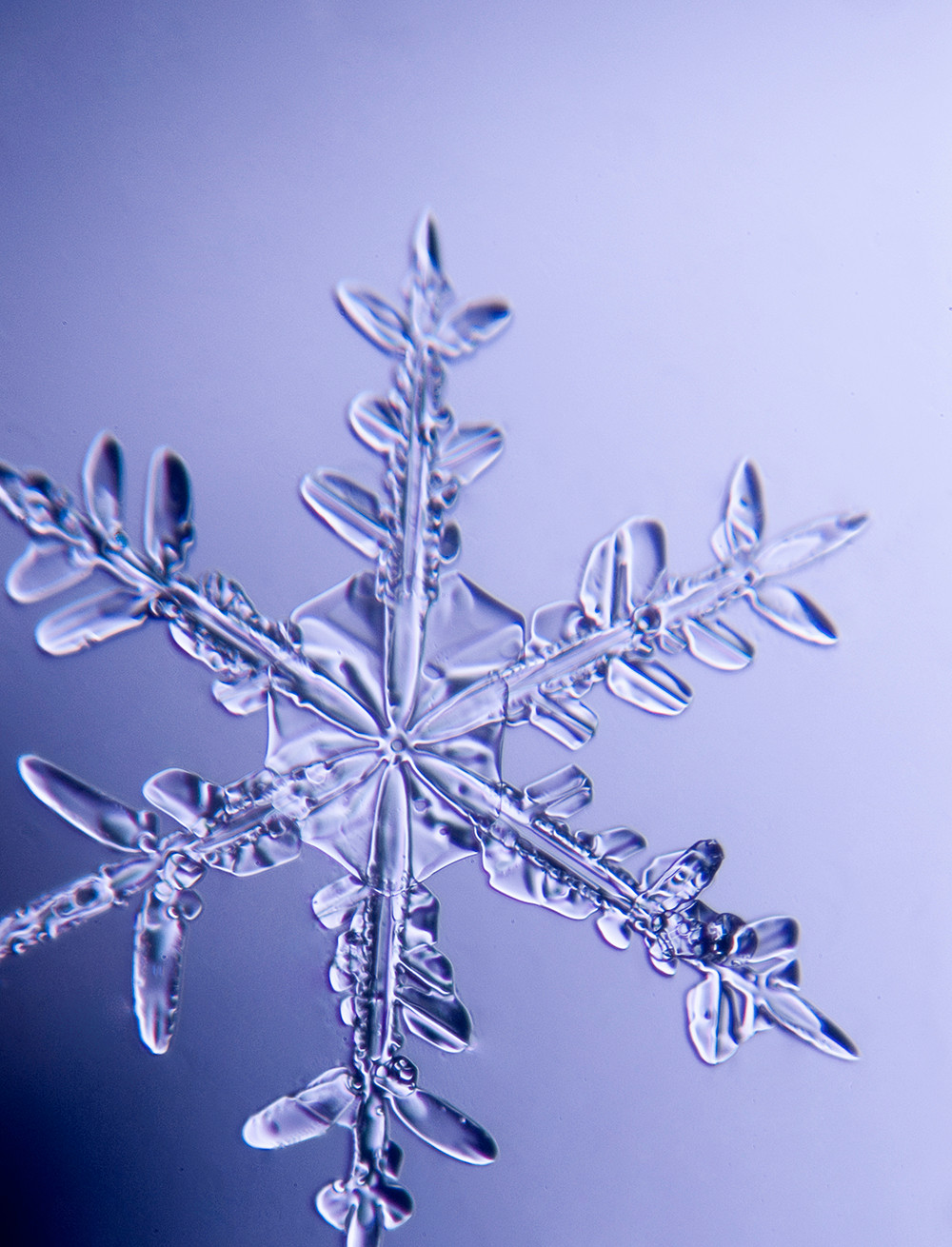
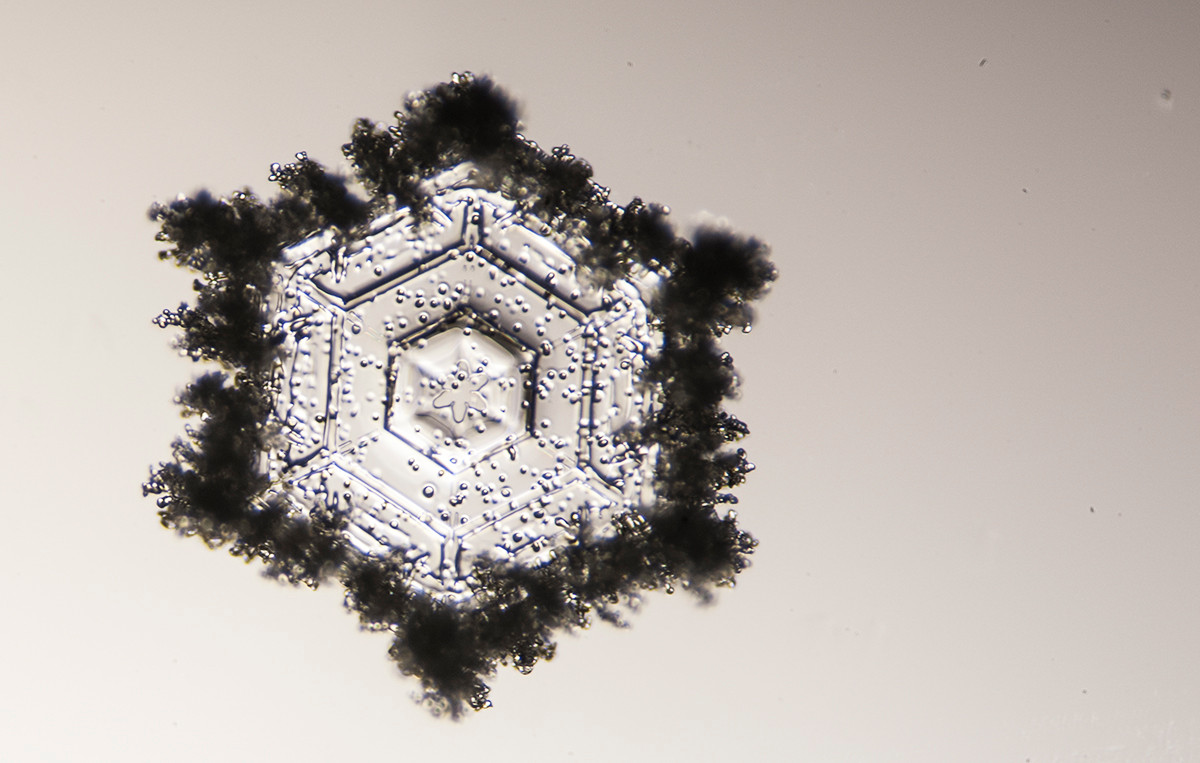
Things have gotten so bad for me that I built my own microscope in November of 2012.
It seems though that by February, I am looking forward to spring in the worst way so I can put winter to rest. It can be overwhelming to have this obsession. 🙂 Regrettably I have shared this curiosity and passion with others overtime. I am truly sorry that every time it snows, many friends and alums now look at the sleeves of their jackets to see what type of snow is falling.
I hope you enjoy my snowflake photomicrographs shared below. These pictures were made during the last 1 months. You can see more by following this link.

